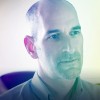Keeping up with CMOS Sensor Design
Matthias Sonder talks about the demands and opportunities of image sensor development.
“With each new sensor, there are new problems to solve,” says Matthias, “the whole driver behind CMOS technology has been ‘make it faster, make it faster, make it faster.’ Well, we can make it faster, but a faster camera often requires the whole system to be faster. So we have to think about how to innovate in a way that will benefit our customers the most. That has to go beyond pure speed.”
Matthias has been a part of imaging innovation for a long time. He started at DALSA as a CMOS designer fourteen years ago, moved into pixel design and then to sensor architecture and project leadership. He was crucial in getting Teledyne DALSA’s unique global shutter technology into higher performance cameras, allowing those cameras to maintain exceptional image quality even while the target is moving at a high speed. Of course, speed is only part of the equation, performance characteristics like noise, full well capacity and artifact management are also part of the equation.
His work is evidenced in both the FALCON (4M60 & 1.4M100) and the FALCON2 (5 and 12M) camera series. These cameras deliver tremendous value for inspection applications in electronics, semiconductors, and flat panel displays, where performance directly affects reliability and number of product.
“It will be a beautiful product, building on all our experience over the years.”
Matthias and the development team are behind the CMOS Voltage-Domain TDI technologies that are coming to market now. “There is a strong team behind this and while we are still developing what is brand new technology, I think what we’ve created together is truly exciting.”
Today, Matthias is working on the next generation of high-speed CMOS area cameras for use in custom applications and eventually for the broader markets. He had this to say about bringing new technology to market, “I am very proud of this next-generation sensor and camera.” He credits his customers for their complementary role in advancing innovation. “The key is really talking to the customer. They know their applications, and we know the technology. Only together can we create something new that really works.”



 Five CMOS Camera Developments to Watch in 2014
Five CMOS Camera Developments to Watch in 2014  When Can a Semi-Custom Vision System Help?
When Can a Semi-Custom Vision System Help? 